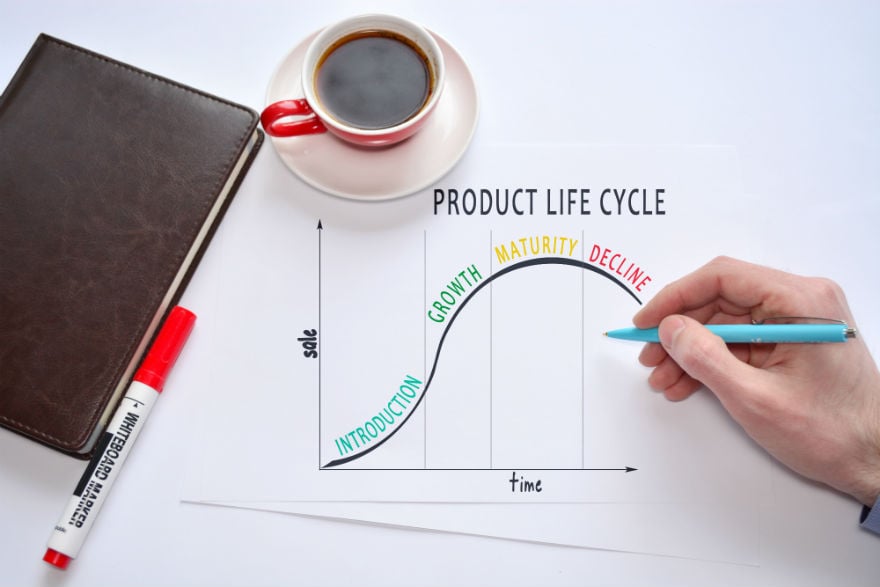We’ve talked before about how you should look for products that sell consistently throughout the year if you want a smart investment. But what does that really mean? How can you evaluate a product’s lifecycle? Grab a bag of popcorn because RepricerExpress is going to dig in deep.
The Three Traits of a Successful Product on Amazon
When you’re look at an Amazon product’s life cycle, there are three main criteria to look at.
1. Product Reviews
The more reviews a product has, the more legit is because people are familiar with it. This doesn’t necessarily mean you should avert your eyes at products that don’t have a lot of reviews, but it will be easier for you if you go with one that does. That’s because you won’t have to work quite as hard at selling people on it.
2. Product Rating
When sourcing products, look for items that have at least a 3.5 star rating to them. If you go under that, you’ll have a tough time swaying buyers on the quality of it. But if you stick to 3.5 stars and above, you’ll be off to a running start because most buyers won’t be questioning if it’s a good purchase.
3. Product Ranking In Category
For this, look for a product with a generally low ranking, like 50,000 or under. The lower-ranked the product, the less competition you’ll have. If you do end up getting the product, your goal will be to increase its ranking, as that means more sales.
How a Successful Product Runs Through Its Lifecycle
Now that you have a shortlist of products, it’s time to evaluate each lifecycle. There are four stages that you should be looking at to see if each product has viability for the long run.
Introduction
This occurs when a product is pretty new to the market and you’ll need to work on establishing it. While you generally want to stay away from completely new products (unless you’re inventing things, but that’s a whole different topic), if you stick to the product rating of under 50,000, you’ll be doing okay.
The work that’s involved here is cultivating a demand for the product. While this can take a lot of work, the reward can be well worth it: you’ll be pretty much alone in selling it and that kind of dominance can pay off handsomely.
Growth
You’ve established yourself in selling this product, but other people have taken note and have started supplying/selling it, too. Your buyers are also increasingly aware of it, but not to the point where the pendulum has tipped in their favour. Demand is strong and you usually enjoy low risk and low competition for a good return.
Maturity
Now the pendulum has swung the other way and it’s become a buyer’s market. There are many iterations of the product available, so you’ll have to price lower and face stiffer competition. To set yourself apart from the crowd, you’ll have to focus on the finer details of selling, like different features or styles, shipping perks, and more.
The risk level of this product is now at a medium level because of the increased saturation. There’s not as much demand for the product so your return won’t be as much as it used to, and you’ll have to finesse your skills in a more marketing sort of way.
Decline
Now we’ve swung completely the other way: buyers show little interest in the product, you’ve dropped your prices as much as you can afford, and you’re bringing smaller and smaller sales. This happens to just about any kind of product, and is usually a result of something shinier or better entering the market, like a new iPod or iPhone.
If/when this happens, your primary goal is to just move the remaining stock so you don’t pay long-term storage fees to Amazon.
Evergreen Items and Trendy Items
Let’s look at two different items to see how they follow the Amazon product lifecycle.
Fidget Spinners: Fidget spinners were most definitely a trend because they cycled through the stages very quickly. Fad products can be great to sell if you jump in at the early stages, but it can be tricky to assess the longevity of one successfully — and consistently.
Wayfarers: These sunglasses are as close to a surefire evergreen item as you can get. They’ve been in style for decades, they look good on just about every type of face, they come in a range of prices, they’re easy to package and ship, and they enjoy a fairly consistent lifecycle that doesn’t sway too much in any direction. And they also sell fairly evenly throughout the year, except maybe in post-Christmas winter.
Amazon Repricing – Free 15-Day Trial
One of the biggest areas that an Amazon product’s lifecycle will affect is pricing. In the first stage, you’ll be pricing it a little on the low side to appeal to buyers. As you move to the second stage, you can up the price because demand is high, and then keep adjusting the price as you move through the next two stages. But even within each stage, you’ll need RepricerExpress for the more finely-tuned adjustments. When you sign up for it now, you start off with a 15-day free trial so you can hit the ground running.



